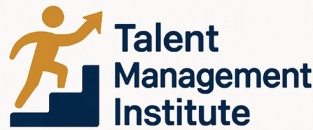
Understanding Resourcing Models
Grasping the Fundamentals of Resourcing Models
In the ever-evolving landscape of talent management, understanding resourcing models is crucial for organizations aiming to optimize their talent acquisition strategies. Resourcing models are frameworks that help businesses allocate their human resources efficiently, ensuring that the right skills are available at the right time to meet project demands. These models are not only about filling job vacancies but also about aligning resources with the long-term goals of the organization.
Organizations today face the challenge of managing resources in a dynamic environment where job demands fluctuate rapidly. A robust resourcing model aids in resource planning, enabling management to make informed decisions about resource allocation. This involves a deep understanding of the organization's current workforce, the skills available, and the gaps that need to be filled. By doing so, businesses can enhance their performance and maintain a competitive edge.
Types of Resourcing Models
There are various types of resourcing models that organizations can adopt, each with its unique advantages and challenges. Some common models include:
- Traditional Model: This model focuses on hiring full-time employees to meet the organization's needs. While it provides stability, it may lack flexibility in adapting to changing demands.
- Hybrid Model: Combining full-time employees with freelancers or contractors, this model offers flexibility and can be more cost-effective.
- Project-Based Model: Resources are allocated based on specific projects, allowing for precise resource management and control over project timelines and costs.
- Agile Resourcing: This model emphasizes adaptability and rapid response to change, often used in dynamic industries where project requirements evolve quickly.
Each of these models requires a strategic approach to resource management, ensuring that the organization's needs are met without overextending its resources. For those exploring opportunities in talent management, understanding these models can provide valuable insights into optimizing resource allocation and enhancing organizational performance. For more insights, consider exploring opportunities with Perkins Jobs.
Key Elements of a Successful Resourcing Model
Building Blocks for Effective Resource Management
In the realm of talent management, a successful resourcing model is pivotal for aligning human resources with organizational goals. The essence of a robust resourcing strategy lies in its ability to efficiently allocate resources while adapting to the dynamic demands of the business environment. Here are some key elements that form the foundation of an effective resourcing model:
- Clear Understanding of Organizational Needs: Before diving into resource allocation, organizations must have a comprehensive understanding of their strategic goals and project demands. This involves assessing the skills and competencies required to meet job demands effectively.
- Flexible Resource Allocation: The ability to adapt to changing business needs is crucial. A flexible resource allocation strategy allows organizations to deploy resources where they are most needed, ensuring optimal performance and productivity.
- Integration of Technology: Leveraging digital tools and platforms can enhance resource planning and management. These technologies aid in tracking resource availability, project timelines, and team performance, facilitating informed decision making.
- Efficient Communication Channels: Clear communication is vital for seamless resource management. Establishing efficient communication channels within teams ensures that everyone is aligned with the organization's objectives and can respond promptly to any changes.
- Continuous Evaluation and Improvement: Regular assessment of the resourcing model helps in identifying areas for improvement. This involves gathering feedback from team members and stakeholders to refine strategies and enhance overall effectiveness.
These elements not only streamline resource management but also contribute to the long-term success of the organization. For further insights into optimizing resourcing models, you can explore the dynamics of successful hiring strategies here.
Challenges in Implementing Resourcing Models
Overcoming the Hurdles in Resourcing Implementation
Implementing effective resourcing models presents its fair share of complexities and obstacles. Organizations often encounter several challenges that can hinder the successful deployment of these models. Recognizing and addressing these issues is crucial for optimizing talent acquisition and management. One of the primary challenges is the alignment of the resourcing strategy with the broader business goals. Resource planning and allocation must be executed in harmony with organizational objectives to foster seamless project management and enhance overall performance. Misalignment can lead to resource wastage and ineffective team deployment. Another notable challenge lies in managing the evolving demands for both resources and skills. As job demands change due to technology advancements and market conditions, organizations must ensure flexibility in their resourcing approach. Adopting a hybrid model or transitioning to new management models such as digital transformation initiatives can aid in meeting these fluid requirements. Effective change management is pivotal when introducing or modifying a resourcing model. Organizations need to prepare their teams, implement robust communication strategies, and manage resistance to change. A dedicated focus on human resource management can facilitate a smoother transition and improve the adaptability of teams to new resource allocation and deployment methodologies. Time management also plays a key role in overcoming resourcing challenges. Proper scheduling and control of project resources are essential to ensure timely completion of tasks while maintaining operational efficiency. Throughout this process, it’s beneficial to draw insights from case studies that showcase best practices in resourcing models. Understanding how successful organizations have navigated similar obstacles can provide a valuable roadmap. For a detailed exploration of opportunities that can mitigate such challenges, consider an in-depth read on the exploring opportunities with ISTARI Careers blog post. This resource provides insights that can enhance decision-making and resourcing strategy formulation.Innovative Approaches to Resourcing
Exploring New Resourcing Frontiers
In a rapidly evolving business environment, organizations are consistently seeking innovative approaches that enhance their resourcing strategies. Embracing these new methodologies not only aids in meeting current job demands but also prepares businesses for future challenges. Below are some pioneering strategies that can revolutionize how resources are managed:- Hybrid Models: Incorporating a hybrid model allows organizations to blend permanent employees with freelancers or contract workers. This flexibility caters to fluctuating resource needs and provides a dynamic approach to resource allocation. It empowers businesses to optimize resource management and cater to specific project demands effectively.
- Digital Transformation: By leveraging digital tools and platforms, companies can streamline resource planning and decision making. Advanced analytics and artificial intelligence offer insights into employee performance and team dynamics, enabling resource models that are adaptive and data-driven.
- Agile Methodologies: The integration of agile practices into resource management models enhances their adaptability. Agile methodologies like Scrum or Kanban focus on iterative work and collaboration, promoting faster response times to change and improving resource deployment efficiency.
- Decentralized Resource Control: Allowing teams greater autonomy in resource allocation fosters innovation and productivity. This model encourages team members to take ownership of resource strategies, enhancing job satisfaction and performance while aligning closely with organizational goals.
Case Studies: Resourcing Models in Action
Real-World Applications: Resourcing Models Implemented
Understanding the theoretical frameworks of resourcing models is one thing, but seeing their application in real-life scenarios can quite literally transform how organizations approach talent acquisition. Various industries and sectors have effectively harnessed these resourcing models to boost their capabilities in recruitment and talent management, leading to enhanced business outcomes. Here, we shed light on some illustrative examples of how resourcing models are used in practice.
Deployment in Technology Projects
Within the technology sector, projects often demand a hybrid model to balance between long-term resource allocation and immediate project demands. By integrating a flexible resourcing strategy, companies are able to allocate resources dynamically, facilitating effective project management. This adaptability allows tech firms to adjust quickly to digital transformation projects, ensuring optimal team performance and timely delivery.
Healthcare Sector Adaptations
In healthcare, the resourcing model must cater to fluctuating patient demands while ensuring high-quality care. Organizations have embraced a proactive resource planning approach, anticipating potential job demands fluctuations. Change management plays a crucial role in this setting, allowing institutions to adapt their resource deployment model to varying workforce needs and regulatory requirements.
Retail Industry Strategies
Retail businesses face the unique challenge of seasonal workforce demands, which necessitates a robust resource management model. Through a dedicated resourcing strategy, organizations can manage both human resources and inventory effectively. This enables them to control operational costs while still maintaining top-notch customer service—a pivotal factor in retail performance.
Building Success through Strategic Control
Across sectors, having a management model that supports strategic control and decision making enhances organizational performance. It allows organizations to better navigate the complexities of resource allocation, aligning their human resource management with overarching business goals. By utilizing these models, companies can create a sustainable ecosystem that supports growth and competitive advantage.
Whether it's managing complex project resource needs or reacting to job market changes, resourcing models provide the framework for foresight and effective management. By scrutinizing these real-life examples, organizations can glean insights that inform future strategy and drive success in an ever-evolving business landscape.
Future Trends in Resourcing Models
Anticipating Change: The Path Forward
The landscape of talent acquisition through resourcing models is poised for significant evolution. As organizations adapt to a rapidly changing world, the ability to foresee and respond to trends will be crucial for future success. Here are some key trends that will shape the future of resourcing models:- Increased Emphasis on Flexibility: Organizations are increasingly looking toward flexible resourcing models that can adapt to changing business needs. With hybrid work models becoming more prevalent, resource management strategies need to allow for dynamic resource allocation to optimize project resource utilization and maintain performance levels.
- Digital Transformation: The integration of digital tools in resource planning and management models is becoming indispensable. As new technologies emerge, resourcing strategies will need continuous updating to ensure efficient deployment models and digital resources management.
- Focus on Skills Over Jobs: The shift from job-centric approaches to skills-based resourcing models indicates a change management strategy. This will enable organizations to build resource models that are more aligned with long-term strategic goals and capabilities.
- Collaborative Networks: With a growing emphasis on collaborative environments, businesses will increasingly utilize project management strategies incorporating team-based approaches to resourcing. This will enhance resource sharing, leading to improved control over resource allocation and optimized resource deployment.
- Data-Driven Decision Making: Implementing robust data analytics and AI-driven insights will empower organizations to optimize their resourcing strategy. Real-time data analysis will enhance decision making processes and foster a performance-driven work culture.













